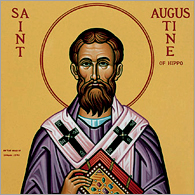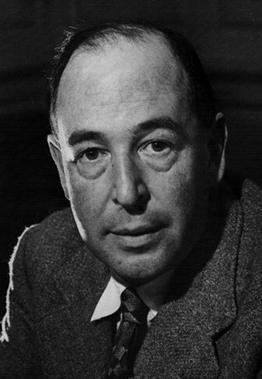But now, turning to the second objection, Galileo was pronounced as “vehemently suspected of heresy”. Given the use of the word “heresy”, does this not demonstrate that Copernicanism was considered as formal heresy in the 1633 decree?
This argument fails to notice that “heresy” in canonical documents issuing from the Inquisition/Holy Office may be used in several senses and does not always apply to that which is formally heretical, that is, to a denial of a defined dogma of the Catholic faith. As John Heilbron stated:
inquisitors sometimes applied ‘heresy’ loosely to rebellion, licentious, or impious talk or acts that, in their experience, revealed a propensity for it. In this loose and informal sense Galileo may have been a heretic to the Inquisition. (“Censorship of Astronomy in Italy after Galileo,” in The Church and Galileo, pp. 282-3.)
Proof of this may be found in Finnochiaro’s work, which reproduces an extract from a primary source to demonstrate this very distinction:
One difference between formal heresy and suspicion of heresy was the seriousness of the offense. For example, a standard Inquisition manual of the time stated that “heretics are those who say, teach, preach, or write things against Holy Scripture; against the articles of the Holy Faith; . . . against the decrees of the Sacred Councils, and the determinations made by the Supreme Pontiffs; . . . those who reject the Holy Faith and become Moslems, Jews, or members of other sects, and who praise their practices and live in accordance with them. . . .” The same manual stated that “suspects of heresy are those who occasionally utter propositions that offend the listeners . . . those who keep, write, read, or give others to read books forbidden in the Index and in other particular decrees; . . . those who receive holy orders even though they have a wife, or who take another wife even though they are already married; . . . those who listen, even once, to sermons by heretics. . . .” (Finocchiaro, The Galileo Affair: A Documentary History, p. 14f.; ellipses his, emphasis mine.)
It is clear from this that the charge of “heresy” and the charge of “vehemently suspected of heresy” are two distinct canonical charges and that the grounds on which the charges are made are likewise distinct. Put simply, if Copernicanism was already considered formally heretical in 1633 then the charge against Galileo would have been of heresy, pure and simple. But the sentence against Galileo was “vehemently suspected of heresy”, specifically for his breech of his agreement with the Holy Office in 1616 not to teach Copernicanism after being forbidden to do so. Because we are bound to read the 1633 decree strictly, we may not read more into it than is there. We have no grounds to elevate the seriousness of the charge. And obviously the sentence does not elevate Copernicanism to a formal heresy. Therefore, Copernicanism cannot be considered a formal heresy, then or now.
The same may be said of the phrase “the aforesaid errors and heresies”. Here’s that part of the decree again:
we are content that you be absolved, provided that, first, with a sincere heart and unfeigned faith, you abjure, curse, and detest before use the aforesaid errors and heresies and every other error and heresy contrary to the Catholic and Apostolic Roman Church in the form to be prescribed by us for you.
Again, although the word “heresies” is used here, the official charge against Galileo is only “vehemently suspected of heresy”. Therefore, reading strictly, we must interpret the word “heresies” in this phrase as the lesser “inquisitional heresy”, rather than the more serious “formal heresy”. We cannot read beyond the bounds of the wording of the decree if we are to read it strictly.
John Heilbron points out that the wording of Galileo’s abjuration—”I abjure, curse, and detest the aforesaid errors and heresies, and generally every other error, heresy, and sect whatsoever contrary to the said Holy Church”—might seem to lump Copernicanism in with other formal heresies (see “Censorship,” p. 283). But Galileo’s abjuration is not magisterial. In fact, he may personally have wrongly believed that he was being charged with a more severe charge than he really was and this would not impact my argument in the least. It is the decree alone which expresses the charge and when read strictly it does not condemn Copernicanism as a formal heresy.
Beyond the fact that it violates the principle of strict interpretation to consider Copernicanism to be a formal heresy, the geocentrists have an additional problem. The 1633 decree states that Galileo is vehemently suspect of heresy for holding and teaching Copernicanism, but also for holding:
that an opinion may be held and defended as probable after it has been declared and defined to be contrary to the Holy Scripture
But if this “opinion” is supposed to be Copernicanism and it is alleged to be a formal heresy on this basis, there would be a significant irregularity since there had been no such authoritative declaration or definition. There can really be only two actions by the Roman congregations involved that could possibly serve as such. Karl von Gebler nicely answers the matter of the Congregation of the Index’s decree:
But a decree of the Congregation of the Index does not entail the obligation; for, although by virtue of the authority conferred on it, it can enforce obedience and inflict punishment, its decrees are not “infallible.” They can, however, be made so according to the ecclesiastical views, either by the subsequent express confirmation of the Pope by a brief in his name, as supreme head of the Christian Catholic Church; or by the decree of the Congregation being originally provided with the clause: “Santissimus confirmavit et publicari mandavit.” But the decree of 5th March, 1616 is neither confirmed by a subsequent brief, nor does it contain that special formula; and, therefore, in spite of this decree, which declared the opinion of Copernicus to be “false and contrary to Holy and Divine Scripture,” it might still be considered as undecided and even probable, because the decree might be fallible, and did not entail the obligation to adopt its sentence as an article of faith. . . . (Roman Curia, p. 239)
So if the “opinion” referenced in the sentence of the decree is Copernicanism—and given the context of the whole decree that seems the most likely intent—a significant canonical irregularity would be created if one insists that this elevates Copernicanism to a “formal heresy”. The authority of the Index, which can be the only authority upon which the Holy Office could have based its decision, was not sufficient to “declare and define” something as contrary to Scripture. Galileo was bound to obey the discipline laid out by that Congregation, but he was not, in conscience, bound to hold that the Congregation of the Index was correct in its judgment.
The same may be said of the injunction delivered to him by the Holy Office in the person of Cardinal Bellarmine. The 1633 decree says that Galileo was “gently admonished” by the Cardinal. Again, as a good Catholic Galileo was bound to obey this gentle but official admonishment, especially since he agreed to do so at that time. But there is no way that this can serve as any sort of doctrinal definition or declaration that would render an opinion officially contrary to sacred Scripture.
The bottom line is that Galileo, as a Catholic in good standing who had sworn his fidelity to the Church, was wrong to transgress the discipline laid out by the Congregation of the Index and to violate his agreement with the Holy Office. But neither the decree from the Index or the personal injunction from the Holy Office could bind any Catholic as to a matter of faith and it is an exaggeration to say that these taken separately or together represent an authoritative and binding declaration concerning the meaning of sacred Scripture.
All of these lines of evidence, taken together, demonstrate conclusively that Copernicanism was never formally condemned as heretical in the 1633 decree.



